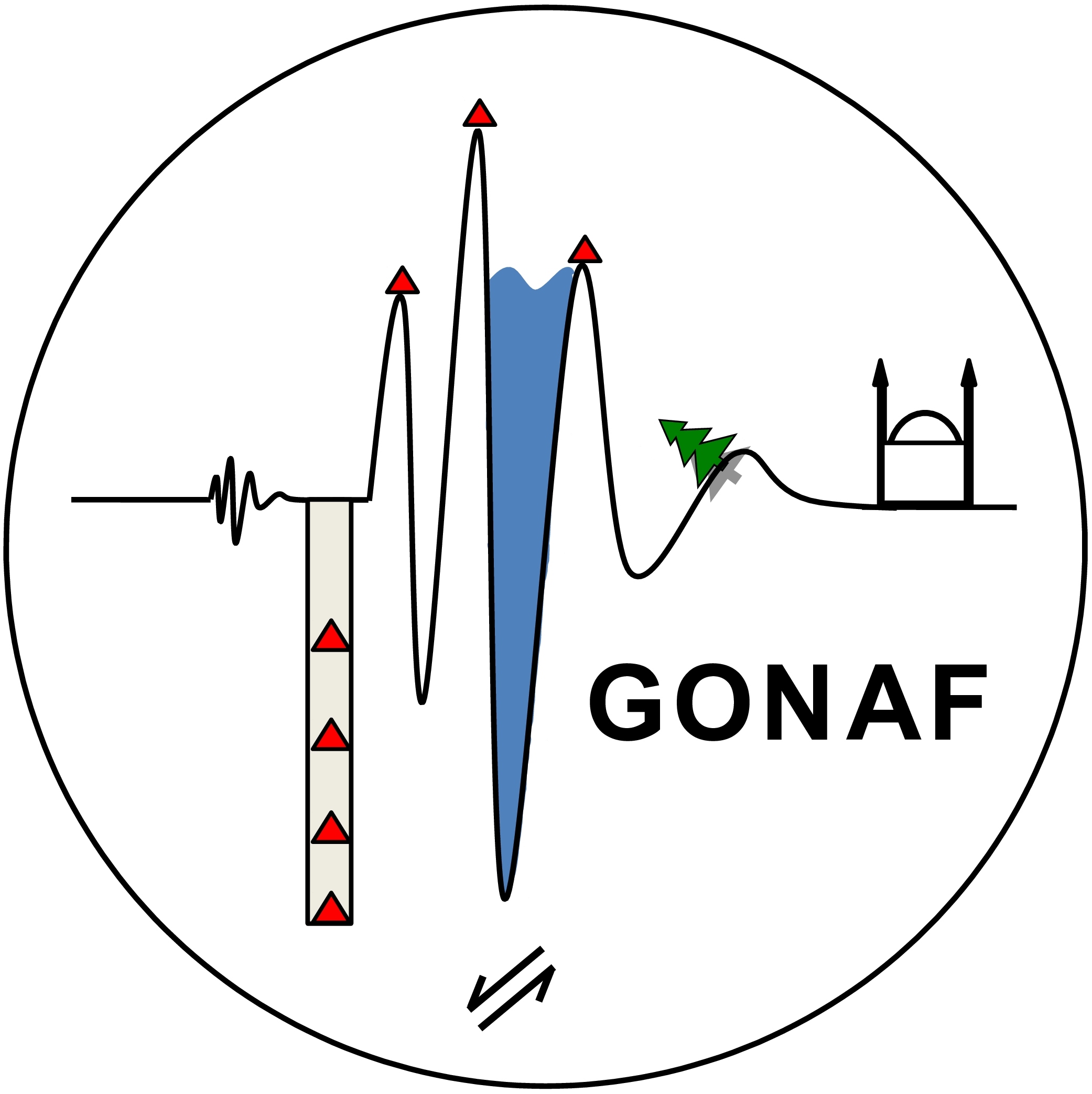The Observatory
The GONAF observatory is currently comprised of seven 300m deep vertical seismic profiling stations and four collocated 100m deep borehole strainmeters. Five of the stations are located on the land surrounding the Princes Islands segment below the eastern Sea of Marmara and two are on the near-fault Princes Islands (Sivriada and Büyakada) south of Istanbul. The 300 m boreholes have vertical arrays of 1- and 3-C seismometers. The four strainmeter boreholes are located within a few meters of the seismometer boreholes and contain horizontal strain tensor sensors and 2 Hz 3-C seismometers at their bottoms. This selection of instruments and depths was made so as to ensure high-precision and broad-frequency earthquake monitoring and vertical profiling, all under low-noise conditions.
Borehole seismic installations have to take into account borehole diameter and tilt, temperature profile, and lithology. Long-term permitting, accessibility, and the availability of electrical power and mobile data transmission infrastructure complete the requirements for a permanent observatory such as GONAF.
In the case of GONAF, with target depths of 300 m and a regional geothermal gradient of ∼ 30°C km−1, temperature was not an issue with respect to long-term functionality of the downhole equipment. Bottom hole temperatures found during logging were around 25°C, well below the 50°C limit beyond which standard operation of the 1 and 2 Hz sensors could become an issue. Conventionally drilled boreholes are claimed to be vertical, but are commonly found to deviate by as much as 5-15° . Accordingly, the drilling company was contracted to keep all GONAF boreholes within 3° from the vertical. This deviation was then checked as part of the logging program.
To find sites in the study area that could provide a more-or-less uniform detection threshold, approximate locations for GONAF stations were pre-defined on maps. The center pieces of this exercise were the Princes Islands, the only location with short distances to the NAFZ. The island sites on Sivriada and Büyukada were decided upon based on their closest proximity to the target fault section. The remaining five on-land sites were then optimized after pre-site surveying. For these sites we sought hard-rock conditions to ensure good coupling of the sensors and therefore more faithful recording of the seismic wave field. Permitting issues related to land ownership as well as local electricity and data communication infrastructure were then evaluated.
On the northern shore of the Sea of Marmara, the Tuzla site is located outside the main Istanbul population center but still in an urbanized area. Along the southern shore of the Sea of Marmara – the northern shore of the Armutlu Peninsula – remote spots were easy to find. However, well-consolidated rock conditions were rare. As a result, their locations were determined primarily by sites that seemed to provide the best rock within the spacing and azimuths needed for the overall network.
| Station ID | Latitude (N) | Longitude (E) | Elevation (m) |
BOZB | 40.534656 | 28.782396 | 72 |
BUAD | 40.841656 | 29.120513 | 5 |
ESNK | 40.596296 | 28.922177 | 15 |
KRTK | 40.590463 | 29.209289 | 124 |
SIVA | 40.876900 | 28.972740 | 2 |
TESV | 40.635321 | 29.081940 | 23 |
TUZL | 40.815150 | 29.274481 | 8 |






